cordyline australis hardiness
Has anyone had any luck overwintering cordyline australis in a more northerly zone. I am in zone 6 in Sw michigan and I have 1 plant that remained evergreen outside at work. I transplanted it to my yard this year and it has grown but very slowly (for a 2nd yr plant). Spikes usually are treated as annuals, though they are able to remain root hardy here reliably. Has anyone else observed this or is it a freak thing here? I am wondering if I should give my 'hardy' spike any extra protection and if anyone has any suggestions for how to do so. Thanks
Comments (25)
Banana_Joe
21 years agoCordyline australis will start to freeze in the upper to mid teens F if the cold snap is prolonged. I don't think their hardiness increases with age. They do grow to tree size on our island, but once every decade or so they seem to get wacked by the cold. However they will resprout from below the ground at the base of the trunk. In zone 6 or 7 I would mulch the ground for winter. There are many large Cordylines that flower here each year.The white flowers are fragrant. The tallest I've seen on our island is 20' ft. in height. They are a very common species here, and very cheap to buy. Good Luck, Banana Joe
Toronto_Boo_Jays
21 years agoI have one of these in a 5 gal pot and it must be about 4 feet tall. I'd love to plant this one in the back and let it overwinter rather than drag it into my garage.
I believe the indivisa is noticeably more hardy than the australis.
Comments?
Related Professionals
Maple Valley Landscape Architects & Landscape Designers · Saint Louis Park Landscape Architects & Landscape Designers · Bound Brook Landscape Contractors · Brookline Landscape Contractors · Framingham Landscape Contractors · Mount Sinai Landscape Contractors · National City Landscape Contractors · Roswell Landscape Contractors · Shaker Heights Landscape Contractors · Wickliffe Landscape Contractors · Tustin Carpenters · Aurora General Contractors · Green Bay General Contractors · Jamestown General Contractors · Joppatowne General ContractorsBanana_Joe
21 years agoMany of the nurserys around here claim they are selling Cordyline indivisia , when infact they are all C. australis. As Marc states, C.indivisia are not common in cultivation. They are less hardy as well. I have dozens of cordylines in my own garden , and they are all australis. Cheers, Joe
trg_e_n_t
Original Author21 years agoIt seems as if my post has been misinterpreted. I believe people are implying I had claimed to have a cordyline indivisa which I do not. I was just hinting at the fact that there is some natural genetic variation amongst marginally hardy plants. Since cordyline australis seems to be marginally hardy here or root hardy it is a good candidate for the tropical garden here as a perennial. I was excited to have found 1 out of 100s that also remained evergreen through a michigan winter. It seems as if I have found the 1 genetically hardier specimen and I will hopefully know if this holds true after the coming winter.
mamamaureen
20 years agoHello, I recently acquired two cordylines in one gallon pots at a plant swap. I thought they were tropical so I moved them into my conservatory. (I live in Zone 6, Tulsa, OK) But the leaf tips are turning brown and dried. I would appreciate it if someone could tell me what I am doing wrong and what action I should take to save these colorful plants. Thanks.
JWMoore
20 years agoLet me say first of all I'm no expert on Cordyline so whether the plants are indivisa or australis is beyond my ability. However without any hesitation I will say that every time there is a question it is said the plant is not indivisa. I picked up 3 of the plants labeled as indivisa from Lowes, they were in Monrovia pots. I posted a question here and was told that I had an australis because indivisa were not in common cultivation. Well there is a list of people on the Cordyline Society who sale the plant. The International Cordyline Society is an Australian Cordyline Growers Association Take a look at the australis on their page and the picture of my plant at Monrovia. I'm willing to beleive I do not have an indivisa but the plant I have is not pictured as australis on the ICS pages. The shape of the leaves seem completely wrong even allowing for the relative youth of my plants. I've had my plants for 3 months, from what I've seen they are about 2 years old. Surely we can all agree a small plant in a 3 gallon pot and a maturing plant 8 feet tall can not be used for comparison. Without a picture of his plant there is no way to say what he has exactly
Here is a link that might be useful: supposed Cordyline Indivisa
JWMoore
20 years agoHere is another picture of Indivisa that is IMHO a completely different plant than I have. It is being offered as seed.Alternately here is a picture from New Zealamd
http://www.habitas.org.uk/gardenflora/cordyline1.htm it is an australis and called a cabbage palm in the articleHere is a link that might be useful: cordyline Indivisa
Ron_B
20 years agoDracaena indivisa hort. = Cordyline australis. So, you've got C. australis being mis-called both Dracaena i. and Cordyline i.
"Introduced to the West ca. 1850, but most plants sold as C. indivisia are really C. australis. Authentic C. indivisia was introduced to North America in 1928, is extremely rare, but is in commerce. Its stem rarely branches (hence the name indivisia); leaves enormous and tropical looking, to 6' long and 8" wide. Flowers less showy, in drooping clusters, creamy- or greenish-white to reddish- or purplish-brown. Berries blue or purple, succulent. Smaller, rarely more than 19' tall, but recorded to 41' x 22'1". Finicky as to cultivation. Apparently ill suited to heavy clay soil, hot or cold areas, and dry conditions. Likely to succeed best in moist, cool partly shaded locations on the Pacific Coast." - A. Jacobson, North American Landscape Trees
The Center for Urban Horticulture had a couple going for a few years near the stream in Rhododendron Glen, at the Washington Park Arboretum, Seattle. When it got cold enough they croaked. However, another two I've heard about in planters near the Seattle waterfront may still be alive, as is perhaps one shown in a planter against a wall in Seattle on the Seattle Zone 9 web site. (Don't know if this site is still up, search the phrase 'Seattle Zone 9' to find out).
WPalm033
20 years agoI am in the Chicago suburbs Z 5b and Someone in my neighborhood has whats seems like a Cordyline australis in their front yard and it looks great! I'm working on finding out what it is, but I just love it! Ill tell yall what it is as soon as I find out...
DavePoole
20 years agoSorry about joining this so late, but I've only just stumbled across the thread. Here in southern England, Cordyline australis and its varieties are planted in their thousands and can be seen either as juvenile, single-stemmed plants right up to well branched trees 25 feet or more high. The species is very highly variable in both leaf size, type and colour.
The most common and typical forms have arching, strap-like leaves to 3 feet long and about 1.5" across. They may be dull grey-green or bright apple green and occasionally there is a pink or red suffusion especially towards the base. Flower colour is generally translucent white and the raceme may be green or dull red. In one form, the raceme is very bright green carrying densely packed, comparatively large, creamy white flowers. Racemes can be erect, arching or strongly pendent. Fruits are either white or lavender mauve and can be as showy as the flowers - often lasting in good condition for upwards of 3 months. Rarely, you will see forms with very broad leaves to around 4" across, but these are readily discernible from Cordyline indivisa on account of the colour, size and basic shape. In recent years, there have been many introductions of various colour forms from New Zealand and most are less cold tolerant than their green-leaved counterparts.
Cordyline australis is reasonably tolerant of a wide range of temperatures and enjoys summer heat up to around 36°C. If grown in a rich soil and supplied with plenty of moisture, C. australis can make as much as 3 feet of trunk in a single year. In most forms the stem is hardy to around minus 10°C for short periods. It develops a large, rather tuberous, underground rootstock that will throw numerous shoots, especially if the top growth is damaged. Here, on rare occasions when plants have been knocked back by frost resulting in the complete loss of trunks, regeneration from the root has occurred within a few months.
The pic on the Monrovia site is typical C. australis and definitely not C. indivisa. The latter species is comparatively difficult to grow on account of its narrower range of tolerances the pic on the Rarepalms site is true C. indivisa and you can see how different it is. Whilst it will tolerate cooler overall temperatures than C. australis, it is less likely to regenerate from the rootstock if badly hit by hard frosts. Ideal temperatures appear to be in the minus 5°C - 25°C range. Either side of these and the plant struggles. Whilst C. australis will soldier on in poor, dry impoverished soils, C. indivisa will not and needs evenly moist, humus rich soils and plenty of humidity.
JWMoore
20 years agoThe growers I've been able to contact admit the plants are australis although there is still some discussion as to hardiness. I've mulched all of mine heavily, caged one in plastic and sited them in varying locations with the single intent of over wintering until I can get a trunked specimen. Once trunked I can bubble wrap, burlap and run a heat tape strip. The bubble wrap heat tape method has proved to be effective here with other palm type plants.
The reason this is so important for me and other tropicalesque gardeners in my area is we have to have some bones in our gardens. Looking out and seeing brown husks is very depressimg and rather hard to explain? We could go with the old reliables but who wants hedges. We are then left with large Yuccas, large Agaves and grasses for sunny areas. Good alternatives yes but they fail to give that tropical appeal. Surprizingly there are more alternatives for shade that remain evergreen but lets face it you'll never have a true tropical appeal without a palms. I may one of the few that actually post regarding our frustation but the email hums with questions. I'm always looking for alternatives someone just sent me a suggestion I'm off to check it out.
keaau
20 years agoMamamaureen - sounds like your Cordyline needs more water, light and humidity...they will love your summers!!!
JWMoore
20 years agoI've managed to over-winter my with a minimum of damage. Only a couple of the fronds were damaged so far so good. I fertilized all four plants yesterday with chicken manure. All the info I have been able to find here on GW refers to my zone as a transitional zone where the plants die back to the ground. Can anyone growing the plants comment on the yearly growth habit and any tips for growing the plants in my area? Thanks in advance BTW 2 of you sent me a private message advising me to go for it thanks for the support
Jimmymbryant_68
19 years agoMy cordy australis is about 10 ft tall. The bottom leaves turned brown and I pulled them off. Since then some middle leaves have turned kinda yellow and seem to be rotting. The leaves above them are beautiful and green as are the leaves below them. What do I do? Tear off the bottom ones and the yellow ones and leave the top? The tree is looking kinda sad. Help! I love this tree! I have had it for 4 years!
vickas
19 years agoI bought my cordyline australis a year ago - it is 5ft tall and i have also noticed that the bottom leaves are turning yellow and the stem is slowly beginning to go brown...i have moved it more in the light (it was in partial shade) and have added time released miracle gro granules. does anyone think it may be overwatered as the roots may be starting to rot? the middle and top leaves are all yellow at the moment.
JWMoore
19 years agombryant, mine are doing quite well growing new fronds from the top that are about a foot long already. There were a few fronds damaged but I have not removed anything and I do not think I will. The trunks are dark green and beginning to fill out meaning they seem to be getting bigger in circumference. I've had them about 9 months, they were 2 feet tall give or take when I got them and the largest is now 38 inches tall. I should be able to wrap the trunks this winter and insulate them with burlap and heat with Xmas lights. The best of luck with yours this summer. As to the water issue I have mine planted in cow manure from Lowes mixed with shredded Pin Oak leaves. You may have a drainage problem or you used too much fertilizer too early in the season. Mine did not show new growth until the ground started to warm up even though I fertilized them in March. I used the manure for exactly this reason, I did not know how much fertilizer to add to the bed or how often. The manure breaks down slowly and it will not burn the plant or roots.
Jimmyjeff_w
19 years agoSpeaking of New Zealand natives,
I am spending 5 days a week living with 2 Kiwis moving back home next month. The father of one is a renowned botanist in his country supposedly. What seeds should I ask them to send me when they get back, especially from the North island? I am now living in a warm/humid zone 8.
Bluetwo
19 years agoThanks DavePoole. Your info on Cordylines is pretty extensive. Now I just have to translate Centigrade into Farenheit.. (I wish the US would get with the decimal system but that's a whole other issue.)
I have an indivisa... it really is one. I got it from reputable and knowledgeable growers at a Hardy Plant Society sale... Right now it's still in its 1 gallon pot. I checked the internet and got contradictory hardiness accounts. So please let me repeat and see if you agree... indivisa would be hardy (most years) in Portland, Oregon where i live. The biggest problem is going to be keeping it humid enough in our dry summers though I will say it's looking really really good now in our cool, very damp, long spring. Would you, then, stick it in the ground or keep it in a pot and take it indoors for the winter or would it work to just mulch it outside? Our temps will go into the teens but not for long. This past winter we had a period of snow with a freeze on top for about 1 1/2 weeks and lots of stuff died. Probably the cordyline would have also.. (a fair amount rotted as well as froze). So would the indivisa get enough bigger being in the ground to make it worth trying?
And last, what about humidity... how much does it really need and how does one give it enough in the summer?
Thanks again for your help...
wilmington_islander
19 years agoJeff: HAve him send some cold hardy passionflowers...tacsonias, i imagine. I've heard they are hardier than what we have in the states.
Marches
7 years agoI live in the UK and see Cordyline australis everywhere. Indivisa isn't so common though, I know there are some in very wet parts of the UK like some gardens in Northern Ireland and Devon.
Occasionally we have a cold winter and there's a mass die off inland, but it's no big deal really. Most come back very strongly from the roots, especially if they were a large, mature plant before they died in the winter they reach their former size in a couple of years and come back very fast from a strong root system with fresh, new growth.
What actually kills them is when you see well-meaning but misguided people wrapping them up in winter with bubble wrap and frost fleece. It's the worst thing to do in my opinion, these things hate to be soaking wet in winter and the frost protection people put round them just makes them rot.
I don't protect my ones that are in the ground. If they die back they dieback, the soil doesn't freeze deep enough in Britain to kill them in most cases. Container ones i just put in a cold greenhouse to keep them from dying from the damp of winter which is the real cause of death.
I have noticed a lot of variation in the plants grown here. Some are very narrow leaved, but mature plants are usually wide leaved, not sure if the leaves get wider over time or different varieties are tougher. I suspect the narrow leaved plants are the "Atlantic green" variety whereas the wider leaved ones are generic australis with maybe some indivisa introgression, although according to something i read somewhere the narrow leaved varieties are meant to be hardier.I've also never seen a mature, large plant of the red, pink or variegated varieties though i know some examples exist, they're probably less hardy and were perhaps selected from stock from the North island.
poaky1
6 years agoI have 2 indivisias, or so labeled (green) from a local Lowes, and a labeled as Australis purple plant from Home depot. They both are labeled as annuals in my zone 6, well, the tag says annual, so I imagine in most zones it must be an annual. I am happy to hear it can be a hardy plant if protected from cold and too much moisture. I also read that in another forum on GW that C .Australis had come back in a zone 6 yard (with protection) for another person on GW. But, they are supposedly selling C.Indivisia in pots here at Lowes. They are just small green spikey plants most people put in arrangements of potted plants as a decorative plant usually tossed in fall, so I guess not many people even try to overwinter them. I would like to know if they are hardy, I may try to overwinter mine protected, especially the 1 purple Australis, definitely gonna try that 1, but, in well drained site, and covered from excess moisture.
gavynfrye48
6 years agoi live in West Virginia and and so far this winter it has got 15°F and i have i see other houses with them and they haven't died yet and they still have beautiful green leaves still unprotected so i would say they could grow were you live
poaky1
6 years agoHey, gavynfrye48, I am in Pa about 25 miles or less from the Wv border (nearest to Morgantown) and mine are still looking good after about 18F, I thought that they were a zone 9-10 plant. I guess in your yard they were subjected to zone 8a ?
I will say that my purple one is not lookin so hot, I am hoping for a zone 7 winter like I had last winter, but, I'm supposed to be zone 6a, well, I am normally, but, this El Ninio is making it milder for us, are you usually a zone 6a or 6b? I know southern Wv can be close to a zone 7 or an actual zone 7, maybe 6b. I doubt they will be okay in a true zone 6a winter, but, if they are they are supposed to get trunks on them eventually, if ours overwinter fine they may get a few inches of trunk next summer. In the really warm places they are tall like palm trees. If they could be covered and heat added like I do and many others do with their palms, you can keep them growing.
See the "tropicalesque" forum, many zone 5-6 people keep palms covered in winter and add lights for heat, I'm trying it this year for the first time with 2 palms.
I know not everybody wants to do all that.
poaky1
6 years agoHey Guys, my Green Cordylines are looking "still live" here in zone 6 Pa, having only had zone 7a temperatures so far, they could likley stay alive in a zone7a climate, but, I'm sure as soon as my zone 6a climate kicks in they'll be toast for good, really, sigh.....
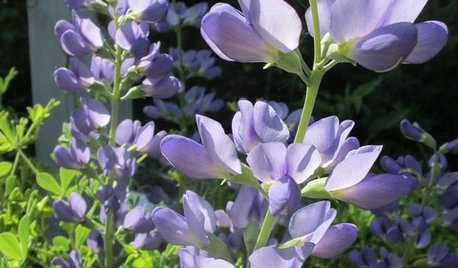
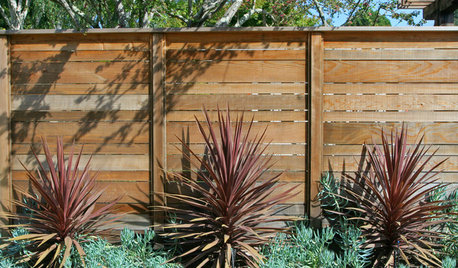
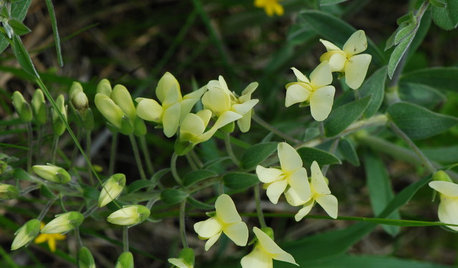

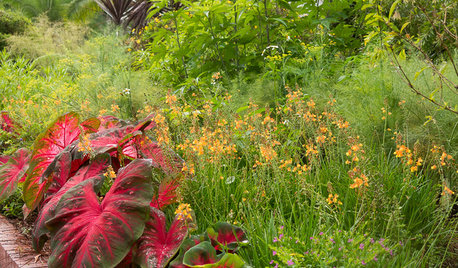
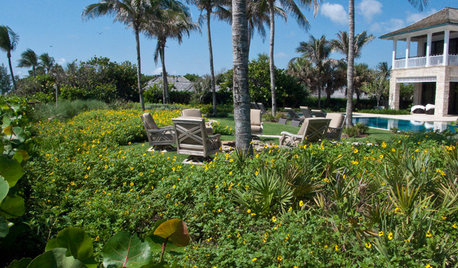


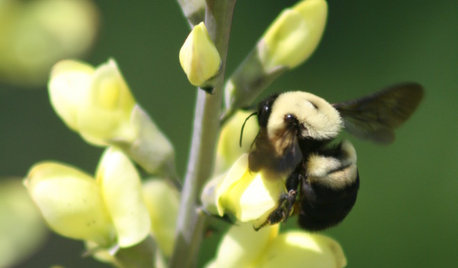
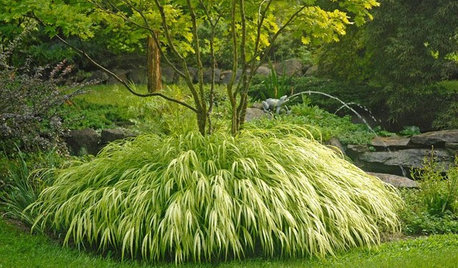







Marc_V